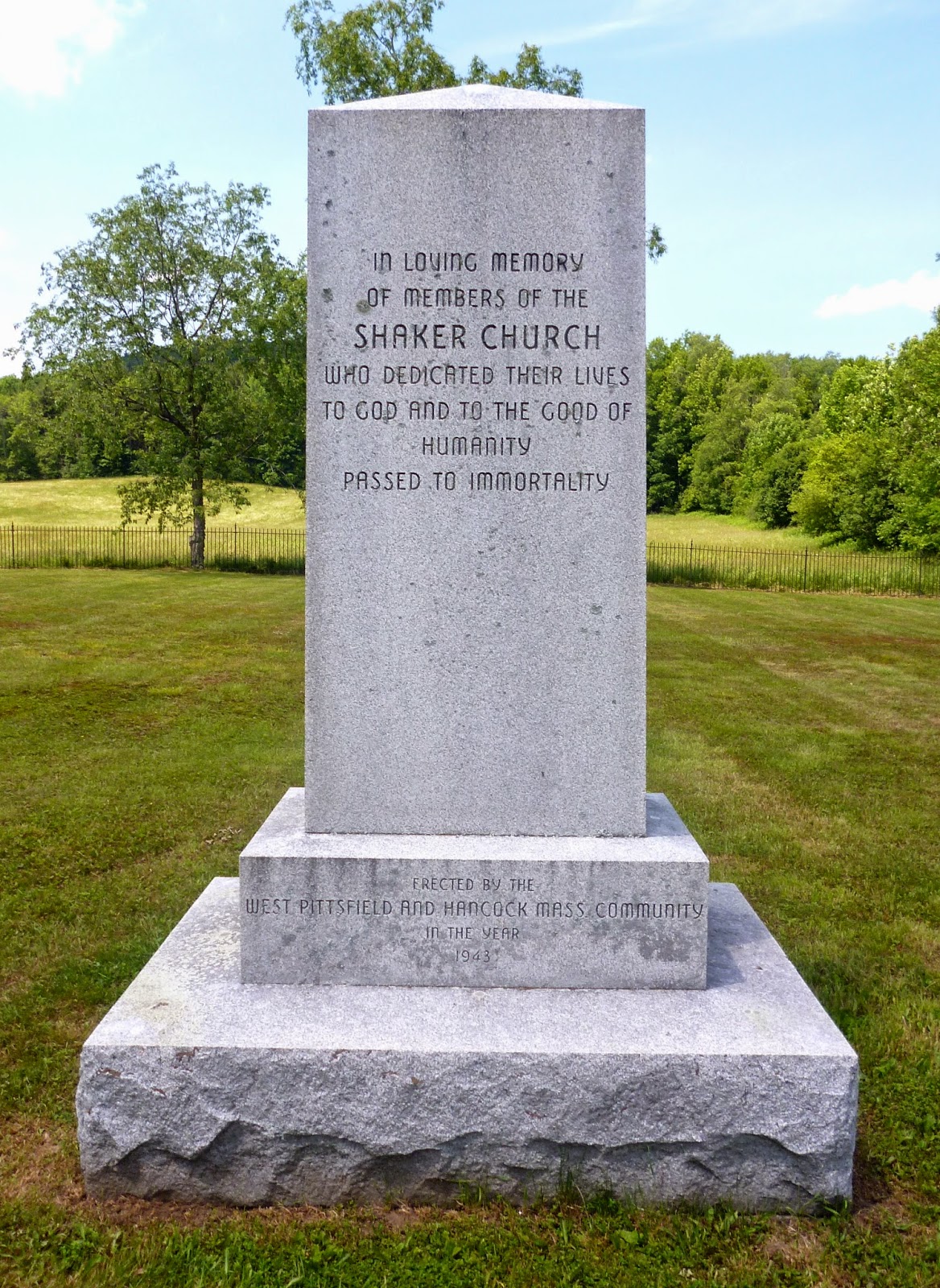The Shakers date back to 1747, to Manchester, England, and their original leader Ann Lee (1736–84), known as 'Mother Lee'. Due to their persecution in England, Lee decided to move the religious group – which believed in celibacy, pacifism, gender equality, and simple communal living – to America.
Hancock Shaker Village began in the late 1780s. By the mid-19th century the Shaker community had reached its peak of between 4000 to 5000 followers, of whom more than 300 lived in Hancock just a few miles from Pittsfield. In the early 1900s there were only about fifty mainly female members here, and the community ended in 1960.
This long view just gives an idea of the size of the place.
The huge Round Stone Barn that features on the village's advertising logo.
Not a barn but the Laundry and Machine Shop.
Inside the Machine Shop.
The Drying Room.
The huge Brick Dwelling where the Shakers lived from 1830 to 1959. As outside technology improved, so did the technology here.
'ALL PERSONS
ARE FORBID USING
TOBACCO
IN THIS HOUSE'
The following rules apply to visitors:
'At the table we wish all to be as free as at home, but we dislike the wasteful habit of leaving food on the plate. No vice is with us the less ridiculous for being in fashion.'
'Married Persons tarrying with us over night, are respectfully notified that each sex occupy separate sleeping apartments while they remain. This rule will not be departed from under any circumstances.'
Alcoholic drinks were allowed, and fruit wines and ciders were made here.
A view of the cellar.
During the summer and autumn food was preserved for the long winter.
Part of the dining room, where prayers were said before meals, which were eaten in silence.
The community was nevertheless hierarchical, and Deacons oversaw and supervised the work here. Some Deacons were responsible for work made for the outside world.
The Brethren's Shop.
Although the Shakers believed in gender equality and there were no strict rules about work roles, men and women nevertheless tended to fall into traditional gender work patterns, with the men doing the farming, woodwork, metalwork, stonework, etc, and the women the cooking.
Shakers sold brooms and brushes, and the invention of the flat broom is credited to a male Shaker.
Varnished or painted oval boxes were also a popular Shaker product.
Hired labor from outside was used as early as 1826 (for work on the Round Stone Barn), although the community suffered from a shortage of males from the latter half of the 19th century. Hired hands lodged here, away from the Brick Dwelling, and away from young girls in Shaker care.
'IN LOVING MEMORY
OF MEMBERS OF THE
SHAKER CHURCH
WHO DEDICATED THEIR LIVES
TO GOD AND TO THE GOOD OF
HUMANITY'
The Shaker cemetery is to the north-east of the village, and there are no individual graves.
Links to my Utopia posts:
––––––––––––––––––––––––––––––
Hancock Shaker Village, MA
Jean-Baptiste Godin and Utopia, Guise, Aisne (02)

























2 comments:
I suppose any society which enforces celibacy is doomed to extinction at some point. Beautiful stone barn though.
It's a beautiful place altogether, and we spent the whole day there. But yes, there's something very odd about a religion that has such a built-in self-destruct button. There were plenty of guides there to answer questions, but of course the important questions often only occur to you in retrospect.
Ann Lee seems to have been uncomfortable about sex anyway, and after several infant deaths it's perhaps not surprising that she gave up on it completely. We'll never know how many Shakers joined due to similar circumstances, or simply because they were asexual anyway. What interests me is how much (if any) serious (and of course relatively recent) research has been made into sex and the Shakers. I can see claims online that there were pregnancies among the Shakers, and indeed it would amaze me if there hadn't been any. But were the guilty parties excommunicated, and how much did the Deacons cover up? I suspect (perhaps totally wrongly) that they may have destroyed incriminating diaries on the death of Shakers, but what of Shakers who left the community – did they say nothing afterwards?
This is something I'll have to get round to looking into. At the moment I've just begun Flo Morse's short book The Story of the Shakers (1986), although I suspect – fascinating though I'm sure it is – that I won't find answers to such questions in it.
Post a Comment